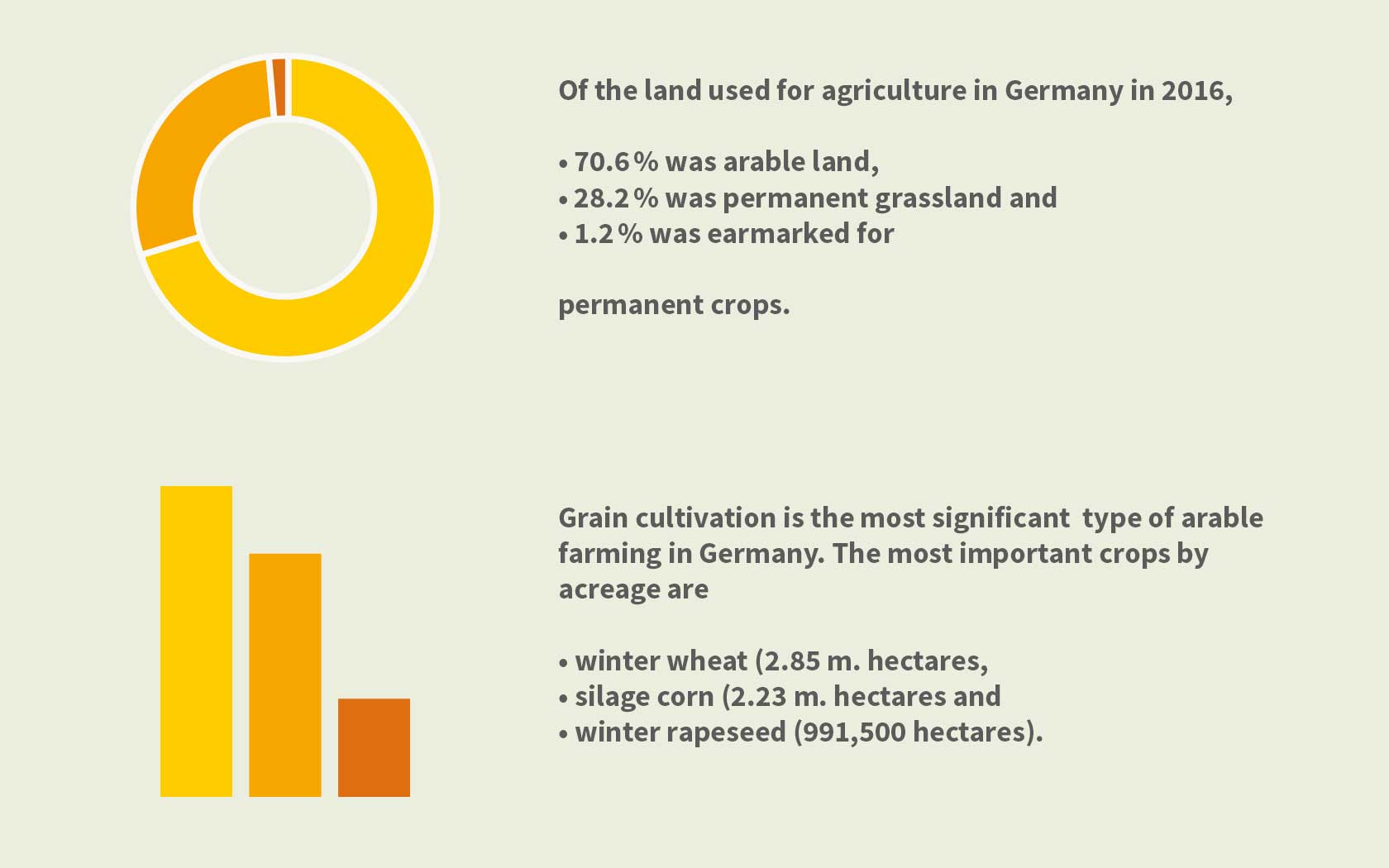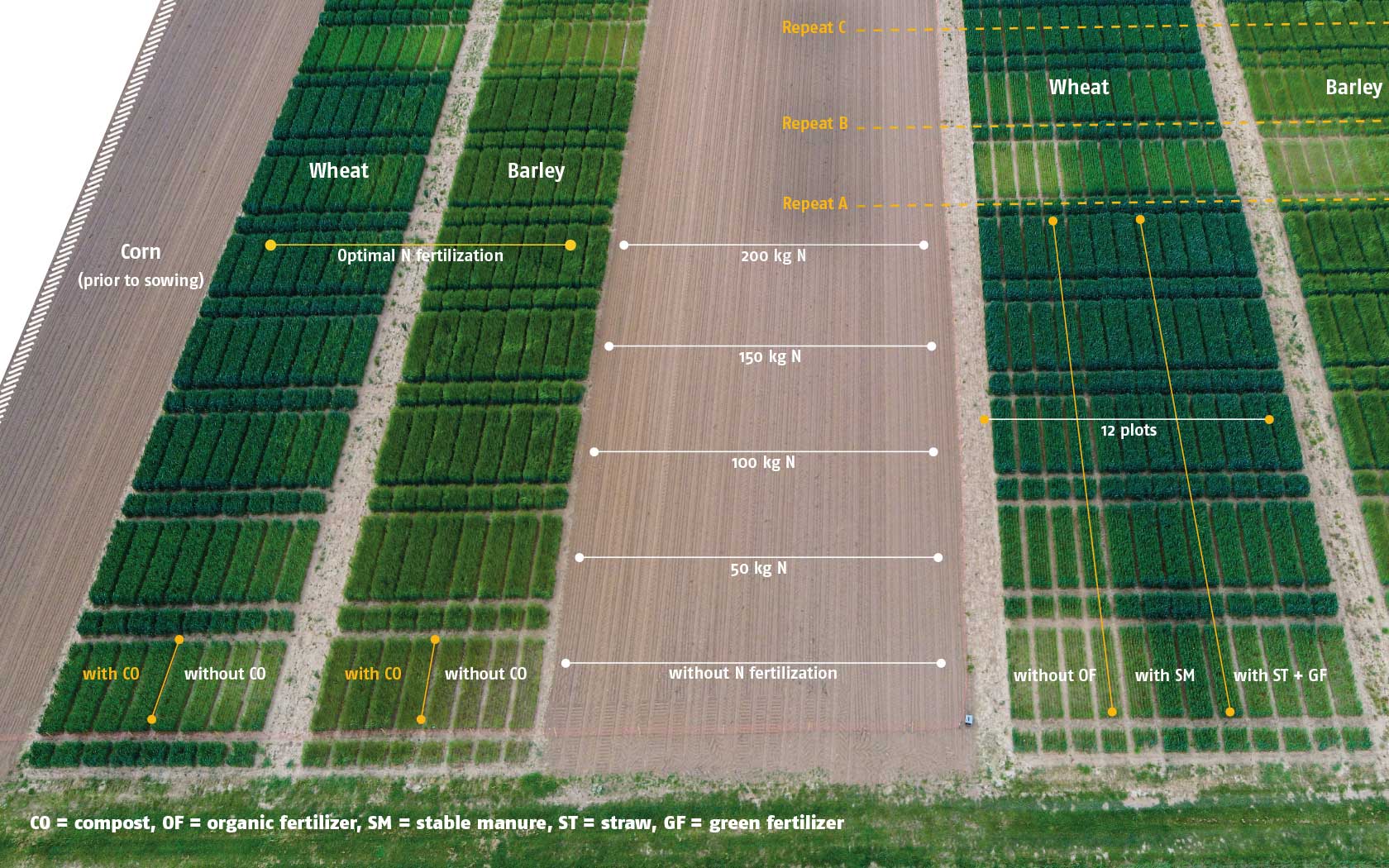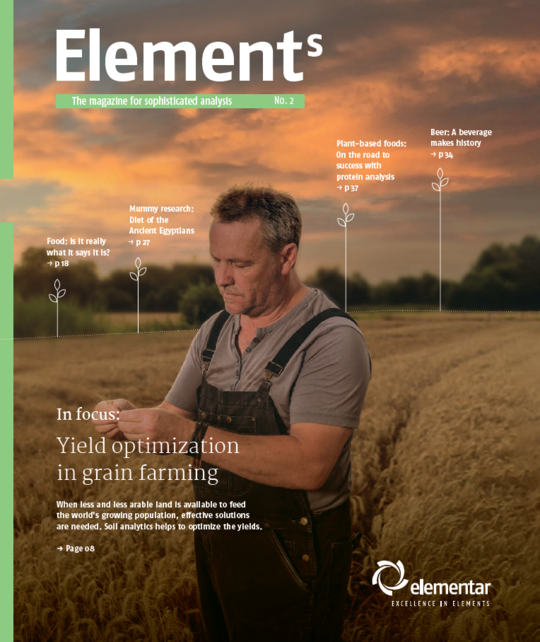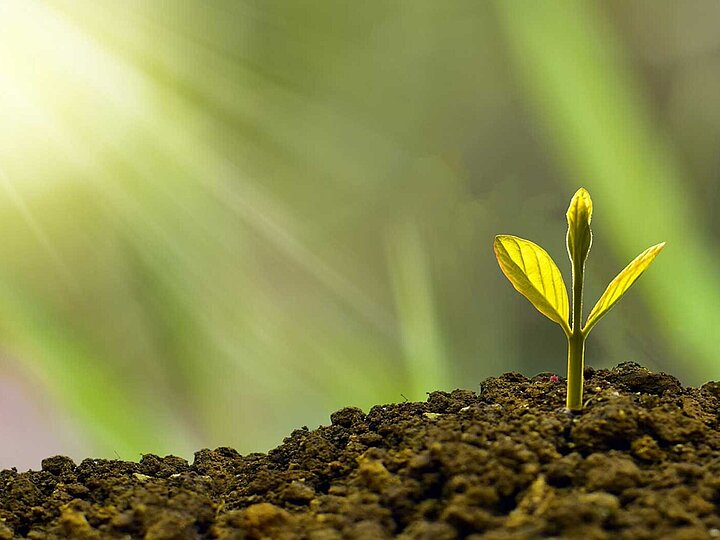Yield optimization with the help of soil analysis

In the first article of this series, Understanding how soil works, we took a closer look at the impact the carbon content of arable land has on it's fertility. In a continuous field trial, Professor Bernd Honermeier, former Head of the Department of Crop Production at Justus Liebig University Giessen from 1998 to 2020, and his colleagues researched, how the use of different fertilizers and forms of cultivation can affect the carbon content of the soil and, thus, crop yields in the long-term.
One finding of his research is that the type of tillage also has a critical influence on water retention and carbon accumulation. “Whereas cultivation that disturbs the soil by loosening and turning it too vigorously can result in more water losses,” explains Professor Honermeier, “it is possible to preserve the water balance by practicing conservation agriculture. In this context, conservation means loosening the soil less frequently and adding more plant residues throughout the year by mulching to ensure that oxygen input, water infiltration and soil erosion are kept to a minimum.”
Elemental analysis of soil samples
Professor Honermeier’s research team uses elemental analysis to determine the carbon and nitrogen content of soils and the biomass of crops. A conversion factor based on the nitrogen values analyzed in the biomass can be used to calculate both the nitrogen removal of the plants (for example, through harvesting) and the crude protein content of the seeds. This data, particularly the removal of nutrients, is the prerequisite for nutrient balances in crop rotations and is necessary to evaluate the efficiency of fertilization measures. Elemental analysis makes it possible to analyze a very large number of samples in a short time and to evaluate the data immediately. “We then determine the content of total carbon and organic carbon (Corg), and the content of nitrogen in a soil layer based on the carbon and nitrogen content of the soil samples. This makes it possible for us to assess the potential of the soil to store carbon and nitrogen under the influence of management measures – i.e. crop rotation, tillage, and fertilization,” Professor Honermeier says, describing the procedure.

The research project
The Justus Liebig University Giessen (JLU) is conducting several permanent field trials on agricultural land, the oldest of which was established back in 1954. Corn, winter wheat and spring barley are being cultivated in a three-year crop rotation on the plots. Different methods of fertilization are being used in each case. Regular soil sampling is being used to investigate the long-term effect on the soil and crop yields of mineral nitrogen, phosphorus and potassium fertilization (NPK fertilization) in combination with the use of stable manure.

Two factors in particular have a positive effect on carbon accumulation in the soil: regular organic fertilization, with straw or compost, for example, and regular cultivation of summer catch crops. These were the observations of the researchers in Professor Honermeier’s faculty during their trials. They also discovered that the combination of nitrogen-phosphorus-potassium fertilization with regular organic fertilization results in the highest and most stable yields. Nitrogen is the most important nutrient that most clearly influences plant growth and, as a result, food production.
The results provide insight into effective and yieldincreasing methods for the tillage of arable land. But there are also other starting points for optimizing yields in the field of plant breeding and precision farming, as Professor Honermeier explains to us in an interview (coming soon).
To be continued...
While Professor Honermeier and his students in Giessen were conducting research into all aspects of grains, focusing on examples from corn, wheat and barley, Abibou Niang was investigating the yield gaps in rice cultivation in West Africa as part of the research for his doctoral thesis at the agricultural faculty of the Rhenish Friedrich Wilhelm University Bonn. His goal was to discover ways to increase crop yields. Faced with challenges like climate change and threats from pests and diseases, cultivation also needs to be made more resource-efficient and sustainable. If you don't want to miss this article, then register for our newsletter to be informed when the next article of this series will be published.
UPDATE: The next article in this series is now available here.
You don't want to wait for the next article? Download our latest Elements magazine to read the whole article series now.

DOWNLOAD YOUR COPY
Fill in the form to receive your download link per e-mail.
Your contractual consideration for the free provision of the download is the subscription to our personalized newsletter. By clicking on the “download now” button, you therefore declare your acceptance of the receipt of personalized newsletters by e-mail by Elementar Americas, Inc. and its group companies as well as the evaluation of your user behavior in this regard and - if available - the merging of this data with your data in our customer database.
In order to receive newsletters from our group companies it is necessary to transfer your above-mentioned personal data to these companies. The data transfer is contractually required.
You are aware that the subscription to our personalized newsletter represents the contractual consideration that you provide for the free provision of the download. You can unsubscribe from the newsletter at any time with effect for the future. You can object to the future use of your data for advertising purposes at any time. For further information, please refer to our privacy policy.
Do not miss any new articles
NEWSLETTER
We will constantly publish new blog articles. Register for our newsletter to stay up-to-date and get informed about latest blog articles, news and trends.



